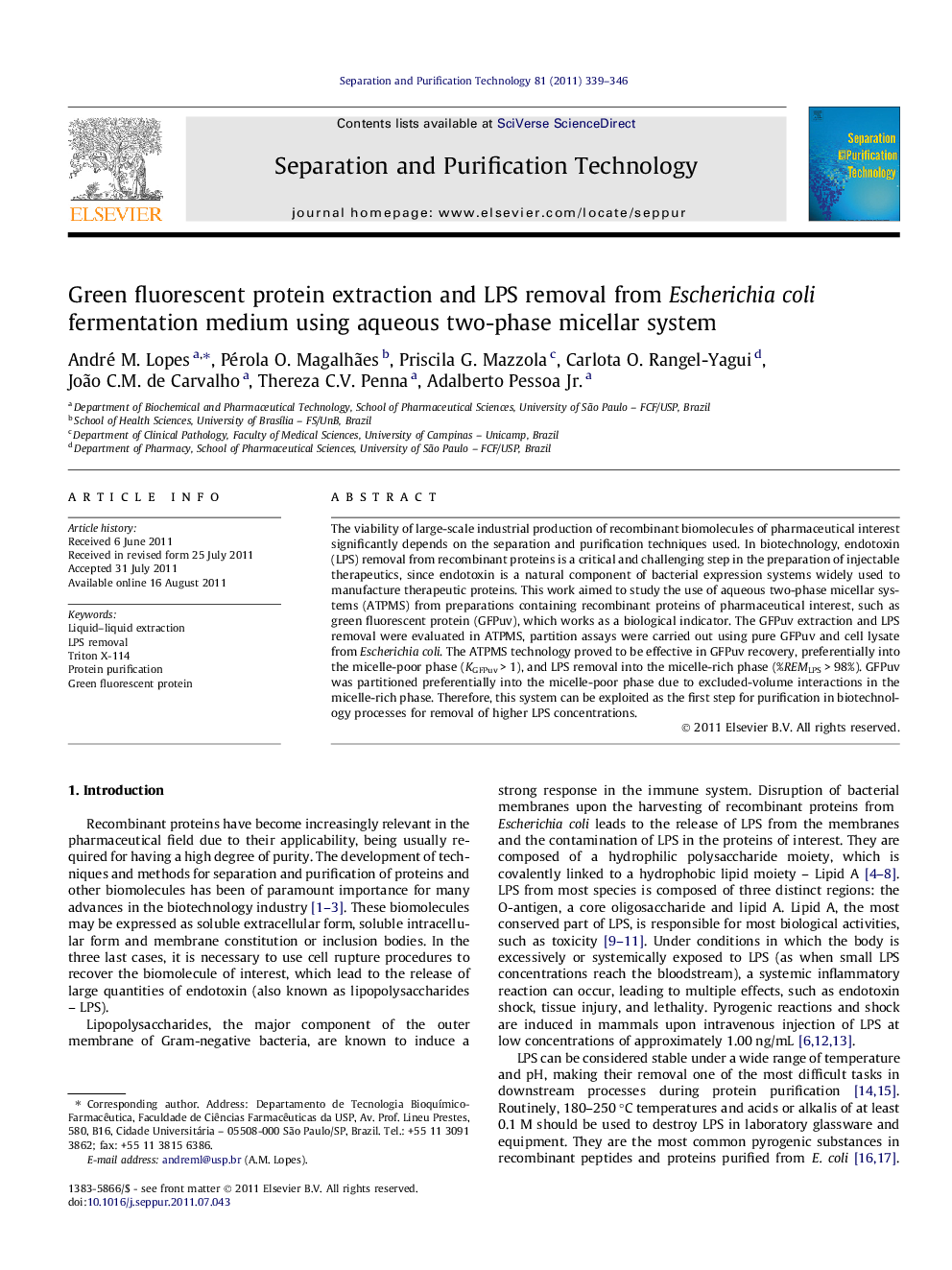| Article ID | Journal | Published Year | Pages | File Type |
|---|---|---|---|---|
| 642520 | Separation and Purification Technology | 2011 | 8 Pages |
The viability of large-scale industrial production of recombinant biomolecules of pharmaceutical interest significantly depends on the separation and purification techniques used. In biotechnology, endotoxin (LPS) removal from recombinant proteins is a critical and challenging step in the preparation of injectable therapeutics, since endotoxin is a natural component of bacterial expression systems widely used to manufacture therapeutic proteins. This work aimed to study the use of aqueous two-phase micellar systems (ATPMS) from preparations containing recombinant proteins of pharmaceutical interest, such as green fluorescent protein (GFPuv), which works as a biological indicator. The GFPuv extraction and LPS removal were evaluated in ATPMS, partition assays were carried out using pure GFPuv and cell lysate from Escherichiacoli. The ATPMS technology proved to be effective in GFPuv recovery, preferentially into the micelle-poor phase (KGFPuv > 1), and LPS removal into the micelle-rich phase (%REMLPS > 98%). GFPuv was partitioned preferentially into the micelle-poor phase due to excluded-volume interactions in the micelle-rich phase. Therefore, this system can be exploited as the first step for purification in biotechnology processes for removal of higher LPS concentrations.
► ATPMS are an interesting alternative for GFPuv extraction and LPS removal. ► ATPMS technology proved to be effective in GFPuv recovery. ► GFPuv is recovered into the micelle-poor phase, due to excluded-volume interactions. ► Triton X-114 can be applied for removal of higher LPS concentrations. ► ATPMS can be exploited as the first step for purification in biotechnology processes.
